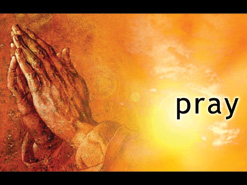The Starting Point
 When you go on a journey there is always a starting point. When I head into the city on the train from my home office I usually check the online app to know the train schedule. On this app I need to state not only my destination, but also what is my starting point? The same is true when you book an airline flight or use the map app on your phone. You need to know your starting point.
When you go on a journey there is always a starting point. When I head into the city on the train from my home office I usually check the online app to know the train schedule. On this app I need to state not only my destination, but also what is my starting point? The same is true when you book an airline flight or use the map app on your phone. You need to know your starting point.
The same is true when it comes to setting direction for your church or ministry? In my last article I defined strategic planning or setting direction as bridging the gap between the church you are today and what God wants your church to become. If you are going to set direction for your church, you need to know where you are at as a church today. What is your starting point?
Your starting point on a journey by train, plane, or using your map app is easy to figure out. It is your home address, or the nearest train station or airport. How do you figure out the starting point of your church? Where you are now?
A great tool to help you do this with a team is a SWOT analysis. SWOT stands for strengths, weaknesses, opportunities, and threats.1 I prefer to call this tool a SWOB analysis, referring to 'Barriers' rather than 'Threats.' You can do this analysis on your own, but it is much better to do this with a team. Begin this analysis by looking internally by considering your (1) strengths and (2) weaknesses. First, look at your Strengths: What is working well? What aspects of your church are growing in effectiveness? As you reflect on the critical areas of ministry, consider what qualities does your church possess that give you the unique ability to address specific needs or opportunities? Second, look at your Weaknesses: What needs improvement or change? What aspects of your church are not efficient or effective? What limitations keep you from moving forward or achieving your vision?
Once you have looked internally, look externally by considering your (3) opportunities and (4) barriers. This third category, Opportunities, looks at the opportunities around you. Ask your team: What opportunities exist now, or could in the near future, of which we as a church might prepare to take advantage of? The final category you look at are Barriers: What barriers do you face as a church? What barriers exist now or could in the near future, that might derail, distract, or in some other way keep you as a church from achieving your vision?
As you reflect on these questions, do not simply make this an exercise of human will. Come before God as you reflect on these questions. Ask the Lord to guide your mind and heart as you think about His leading in your church and the direction He would like your church to take in the future. In what ways has God strengthened your church in its life and ministry? What can God do to turn your weaknesses into strengths as you move into the future? Which of the opportunities can be used to grow your gospel impact and bring God glory in the community around you? How can God enable you to overcome the barriers you are facing in ministry?
Review the list of strengths, weaknesses, opportunities and barriers you created during your SWOB analysis and rank them based on those that will have the greatest impact on your ministry. For example, consider: What strengths are likely to have the most impact on your mission and vision? What weaknesses are likely to endanger or derail the success of mission and vision? Select the top three in each category for use these in discovering the direction you need to set for your church and its ministry.
While a SWOB Analysis is a great tool to figure out the starting point of your church, there is another tool that is easier to administer and will give you a great objective analysis of where you are as a church today. This tool is the NCD (Natural Church Development) Survey, or alternatively, the NCLS (National Church Life) Survey. In fact, I usually default to using one of these surveys if I am assisting churches to figure out what is working well and what needs improvement or change. Both surveys involve a larger number of people than you would involve when you do a SWOB Analysis. This will increase objectivity, and especially with the NCD Survey, you will have a raft of accurate information that you can use to discover the direction you need to focus on as a church as you move into your preferred future.
Whatever tool you use, if you want to set the direction for your church or ministry, you need to understand your starting point. If you want to know more about any of these tools or some assistance in administering them, then I can help. Simply This email address is being protected from spambots. You need JavaScript enabled to view it.. And I will help you discover your starting point.
1 More info about doing a SWOT Analysis can be found here.





 Jack De Vries was hired on by the Christian Reformed Churches of Australia and began his work as Ministry Training Coordinator in January 2008. In 2012 this role shifted to that of Ministry Development Coach.
Jack De Vries was hired on by the Christian Reformed Churches of Australia and began his work as Ministry Training Coordinator in January 2008. In 2012 this role shifted to that of Ministry Development Coach.
